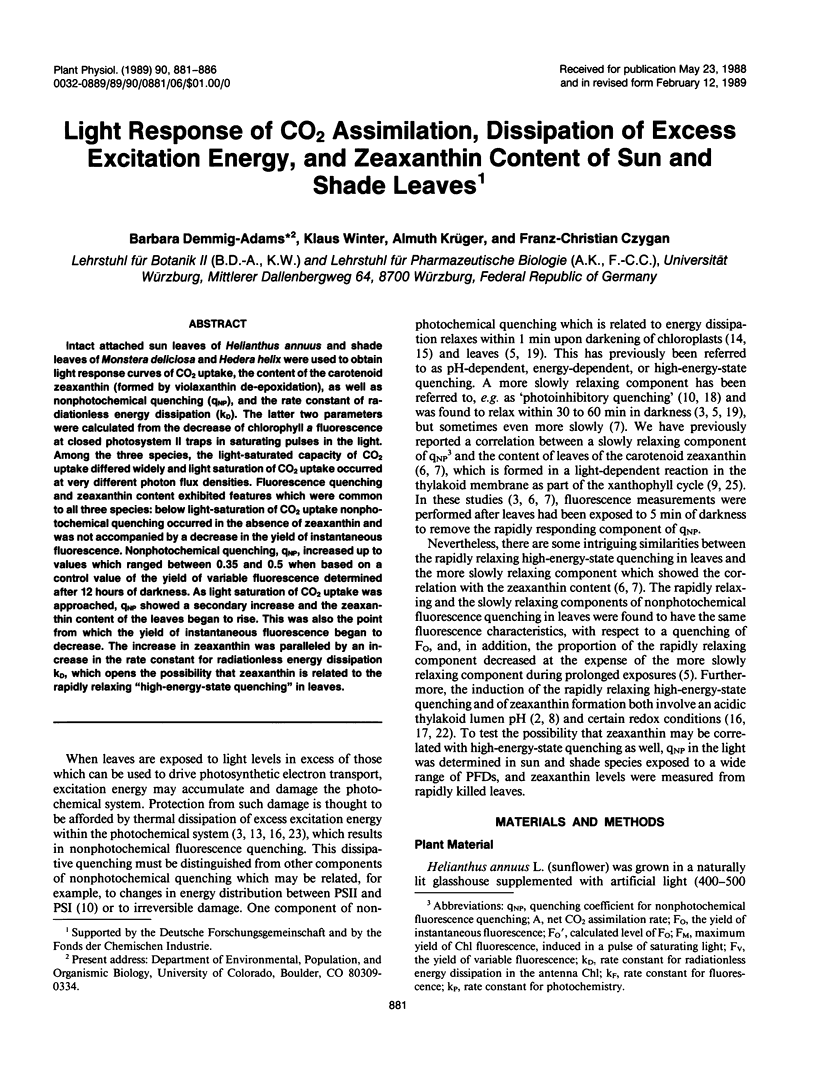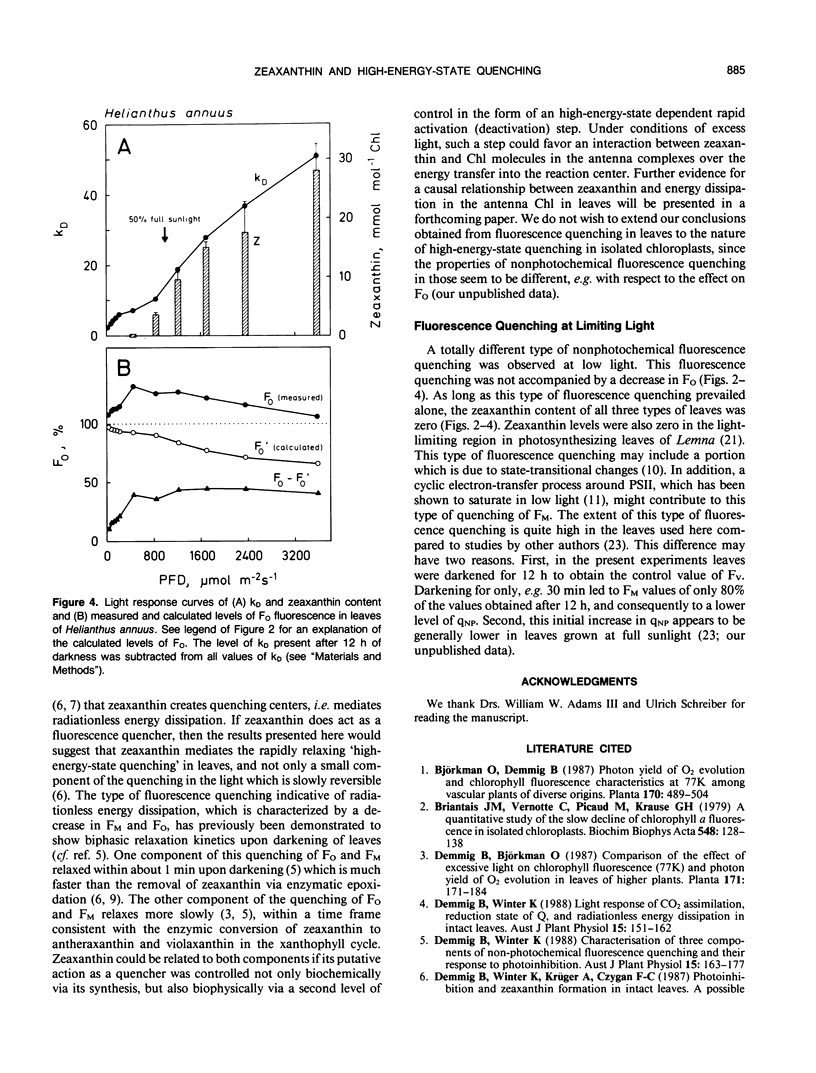Abstract
Intact attached sun leaves of Helianthus annuus and shade leaves of Monstera deliciosa and Hedera helix were used to obtain light response curves of CO2 uptake, the content of the carotenoid zeaxanthin (formed by violaxanthin de-epoxidation), as well as nonphotochemical quenching (qNP), and the rate constant of radiationless energy dissipation (kD). The latter two parameters were calculated from the decrease of chlorophyll a fluorescence at closed photosystem II traps in saturating pulses in the light. Among the three species, the light-saturated capacity of CO2 uptake differed widely and light saturation of CO2 uptake occurred at very different photon flux densities. Fluorescence quenching and zeaxanthin content exhibited features which were common to all three species: below light-saturation of CO2 uptake nonphotochemical quenching occurred in the absence of zeaxanthin and was not accompanied by a decrease in the yield of instantaneous fluorescence. Nonphotochemical quenching, qNP, increased up to values which ranged between 0.35 and 0.5 when based on a control value of the yield of variable fluorescence determined after 12 hours of darkness. As light saturation of CO2 uptake was approached, qNP showed a secondary increase and the zeaxanthin content of the leaves began to rise. This was also the point from which the yield of instantaneous fluorescence began to decrease. The increase in zeaxanthin was paralleled by an increase in the rate constant for radiationless energy dissipation kD, which opens the possibility that zeaxanthin is related to the rapidly relaxing “high-energy-state quenching” in leaves.
Full text
PDF





Selected References
These references are in PubMed. This may not be the complete list of references from this article.
- Briantais J. M., Vernotte C., Picaud M., Krause G. H. A quantitative study of the slow decline of chlorophyll a fluorescence in isolated chloroplasts. Biochim Biophys Acta. 1979 Oct 10;548(1):128–138. doi: 10.1016/0005-2728(79)90193-2. [DOI] [PubMed] [Google Scholar]
- Demmig B., Winter K., Krüger A., Czygan F. C. Zeaxanthin and the Heat Dissipation of Excess Light Energy in Nerium oleander Exposed to a Combination of High Light and Water Stress. Plant Physiol. 1988 May;87(1):17–24. doi: 10.1104/pp.87.1.17. [DOI] [PMC free article] [PubMed] [Google Scholar]
- Kitajima M., Butler W. L. Quenching of chlorophyll fluorescence and primary photochemistry in chloroplasts by dibromothymoquinone. Biochim Biophys Acta. 1975 Jan 31;376(1):105–115. doi: 10.1016/0005-2728(75)90209-1. [DOI] [PubMed] [Google Scholar]
- Siefermann D., Yamamoto H. Y. Light-induced de-epoxidation of violaxanthin in lettuce chloroplasts. IV. The effects of electron-transport conditions on violaxanthin availability. Biochim Biophys Acta. 1975 Apr 14;387(1):149–158. doi: 10.1016/0005-2728(75)90059-6. [DOI] [PubMed] [Google Scholar]
- Winter K., Demmig B. Reduction State of Q and Nonradiative Energy Dissipation during Photosynthesis in Leaves of a Crassulacean Acid Metabolism Plant, Kalanchoë daigremontiana Hamet et Perr. Plant Physiol. 1987 Dec;85(4):1000–1007. doi: 10.1104/pp.85.4.1000. [DOI] [PMC free article] [PubMed] [Google Scholar]


